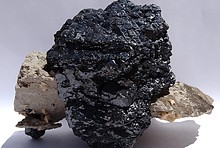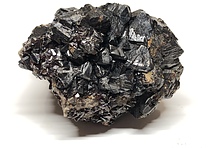Home PageAbout MindatThe Mindat ManualHistory of MindatCopyright StatusWho We AreContact UsAdvertise on Mindat
Donate to MindatCorporate SponsorshipSponsor a PageSponsored PagesMindat AdvertisersAdvertise on Mindat
Learning CenterWhat is a mineral?The most common minerals on earthInformation for EducatorsMindat ArticlesThe ElementsThe Rock H. Currier Digital LibraryGeologic Time
Minerals by PropertiesMinerals by ChemistryAdvanced Locality SearchRandom MineralRandom LocalitySearch by minIDLocalities Near MeSearch ArticlesSearch GlossaryMore Search Options
The Mindat ManualAdd a New PhotoRate PhotosLocality Edit ReportCoordinate Completion ReportAdd Glossary Item
Mining CompaniesStatisticsUsersMineral MuseumsClubs & OrganizationsMineral Shows & EventsThe Mindat DirectoryDevice SettingsThe Mineral Quiz
Photo SearchPhoto GalleriesSearch by ColorNew Photos TodayNew Photos YesterdayMembers' Photo GalleriesPast Photo of the Day GalleryPhotography
╳Discussions
💬 Home🔎 Search📅 LatestGroups
EducationOpen discussion area.Fakes & FraudsOpen discussion area.Field CollectingOpen discussion area.FossilsOpen discussion area.Gems and GemologyOpen discussion area.GeneralOpen discussion area.How to ContributeOpen discussion area.Identity HelpOpen discussion area.Improving Mindat.orgOpen discussion area.LocalitiesOpen discussion area.Lost and Stolen SpecimensOpen discussion area.MarketplaceOpen discussion area.MeteoritesOpen discussion area.Mindat ProductsOpen discussion area.Mineral ExchangesOpen discussion area.Mineral PhotographyOpen discussion area.Mineral ShowsOpen discussion area.Mineralogical ClassificationOpen discussion area.Mineralogy CourseOpen discussion area.MineralsOpen discussion area.Minerals and MuseumsOpen discussion area.PhotosOpen discussion area.Techniques for CollectorsOpen discussion area.The Rock H. Currier Digital LibraryOpen discussion area.UV MineralsOpen discussion area.Recent Images in Discussions
Techniques for CollectorsOxalic acid - Do's and Dont's

21st Aug 2006 10:40 UTCAymeric Longi
I have a bunch of cristals that need some cleaning with me, and a pack of powdered Oxalic Acid. This is my first attempt at using it, so would be nice to get a hand. What are the dosages ? Any security measures ?
important thing also, what are the mineral which i should NEVER clean using oxalic acid ?
thanks for help !
Aymeric
21st Aug 2006 21:50 UTCDon Saathoff Expert

23rd Aug 2006 09:19 UTCAymeric Longi
23rd Aug 2006 09:37 UTCPeter Haas
Every specimen will take up liquids through capillary forces. Once these cavities are filled with water, the penetration of any chemical from an outside liquid into the rock becomes negligible (diffusion in a static liquid phase is a very slow process). On the other hand, if the cleaning solution is applied directly, without previous soaking, the solution with all the chemicals dissolved in it will be pulled into the rock. To get rid of them afterwards, by washing with clear water, is almost impossible, since the same principles apply in this situation as in the reverse situation with the chemicals outside and the water inside the rock. In other words, if you don't soak them in clear water before applying the cleaning solution, there will be no use in soaking them afterwards.
23rd Aug 2006 17:02 UTCDon Saathoff Expert

24th Aug 2006 11:20 UTCAymeric Longi
4th Sep 2006 19:54 UTCPaul L. Boyer
http://www.jtbaker.com/msds/englishhtml/o6044.htm




Mindat.org is an outreach project of the Hudson Institute of Mineralogy, a 501(c)(3) not-for-profit organization.
Copyright © mindat.org and the Hudson Institute of Mineralogy 1993-2024, except where stated. Most political location boundaries are © OpenStreetMap contributors. Mindat.org relies on the contributions of thousands of members and supporters. Founded in 2000 by Jolyon Ralph.
Privacy Policy - Terms & Conditions - Contact Us / DMCA issues - Report a bug/vulnerability Current server date and time: May 13, 2024 17:59:58
Copyright © mindat.org and the Hudson Institute of Mineralogy 1993-2024, except where stated. Most political location boundaries are © OpenStreetMap contributors. Mindat.org relies on the contributions of thousands of members and supporters. Founded in 2000 by Jolyon Ralph.
Privacy Policy - Terms & Conditions - Contact Us / DMCA issues - Report a bug/vulnerability Current server date and time: May 13, 2024 17:59:58










